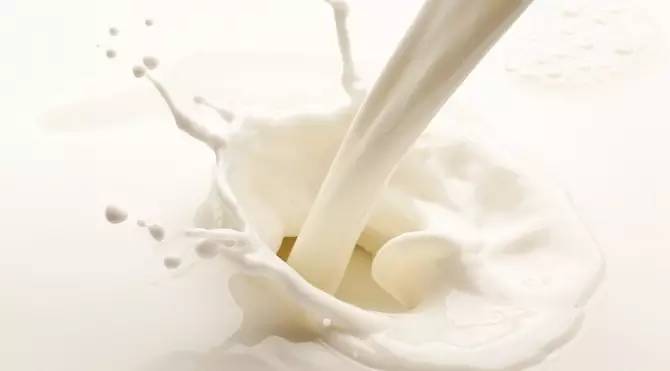
It is said that it was the cat's accidental discovery.
what are these beautifully carved buttons made of? The answer is a "plastic" derived from milk.
Yes, people really collect proteins from milk to make this material. The key to making it lies in two ingredients: one is casein in milk, the other is formaldehyde. Here, formaldehyde acts as a cross-linked casein molecule, resulting in the formation of this odorless, insoluble, insensitized, antistatic, almost non-flammable and biodegradable material.
they react like this:
this material is called "Galalith" (casein plastic in Chinese), and it first appeared in the 19th century. Its products still look very good, and it still has an advantage in that era of underdeveloped petrochemical industry.
however, it also has a fatal disadvantage: it cannot be melted and cast, it can only be made into a thick plate, and then carved into the desired shape, and it is not very heat-resistant. When more convenient plastics emerge, it naturally withdraws from the market.
Searching for spaghetti strap wedding dress to add a dash of grace to your outfit? Have a look at our latest affordable release.
but I have to say, this idea of developing new materials from ordinary ingredients is very interesting.
recently I read an article on chemistryworld that the origin of this plastic is also related to a cat. Chemist Adolf Spitteler's cat knocked over a bottle of formaldehyde in the lab one night, resulting in formaldehyde dripping into the cat's milk plate. In the morning, the chemist found that milk exposed to formaldehyde had become a solid material with a texture like animal horns, so he embarked on the road of developing casein plastics.
the process of producing these plastics goes something like this: first, remove the fat from the milk, then treat it with acid or Chymosin, let the casein form a clot, separate it, and then wash and dry. Subsequent treatment with alkali turns the casein clots into pastes, which can be heated and pressurized into rods or flakes. Then, it needs to be cured in formaldehyde solution for a long time.
plastic made from milk is almost invisible now, but the adhesive made from casein is still in use. Here is a little tutorial on DIY casein glue, which is safer than making milk plastic. If you are interested, you can also try
PS: I think it's best not to have a cat in the lab.
reference & read more: https://www.chemistryworld.com/podcasts/casein/3007625.article